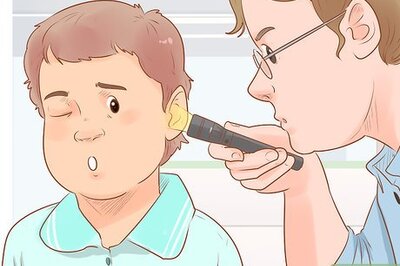
views
The incidence of breast cancer in Indian women is very high and stands at about 33% of all cancers detected in women between the age group of 25-40 years. Moreover, the fatality rate of breast cancer is extremely high too, since women visit their doctor due to associated symptoms only when the cancer has reached an advanced stage. Early detection is a boon to life and ensures that timely treatment helps deter the growth of cancerous cells from the infant stage.
These statistics are ever increasing, and early detection is key to improving treatability and survival rates. This is where a mammography plays a critical role. A mammography or mammogram is nothing but an X-ray of the breasts that helps detect any early indicators of breast cancer.
What is the process of a mammogram?
In a more technical sense, a mammogram is similar to taking an X-ray of the breast. “During the procedure, you will be asked to be bare-chested, and the technician will then place your breast on a plate, and another plate slowly lowers to compresses your breast slightly, to enable the machine to take images of the inside of your breast. The process is repeated for both the breasts and the sides, too," says Dr Suresh H Advani, Prof. MBBS, MD (General Medicine), FICP, MNAMS, FNAMS.
When should you get a mammogram done?
A mammography is a precautionary or screening test and is performed since the symptoms of breast cancer are often synonymous to the regular body changes or infections one might experience, such as redness and sensitivity in the breast, change of shape of the nipple, irregular lumps near the armpit, collarbone or in the breast, orange-skin like appearance of the breast. These are often confused with menstrual effects or infections, and women don’t get themselves tested. “It is therefore, recommended to get a mammography done, annually, for women between the age of 40 to 55, and once every two years for those above 55-years, especially if they are in the average risk zone. This would also apply if you have a high risk of breast cancer, especially if you have a family history of breast cancer, especially if your mother or sister has had the disease," adds Dr Advani. Further, a mammography can be done anytime if you find a lump or any other symptoms associated with breast cancer. The best way to go about this is to consult a doctor as soon as you find the symptoms.
Do’s and Don’ts of Mammography
Dr Advani shares things you should keep in mind when going in for a mammography:
- Don’t feel shy – Women usually feel uncomfortable to get the test done due to pre-conceived prejudices. If you have symptoms and are at a risk zone, it is important to get your breasts screened at the earliest after consultation with a specialist.
- Avoid scheduling a mammogram a week before or after your period cycle – Your breasts will usually be sensitive and swollen during this time and the pressure of the plate will seem to be amplified because of this.
- Don’t wear powder, deodorants or perfume on the day of your mammogram – Cancer shows up as white spots on mammogram. Deodorants, sprays and powders will also show up as white spots and can be confusing for the radiologist.
- Don’t panic – Often, lumps are due to various other reasons such as fibroids. Try not to overthink the scenario and stay as calm as possible. Breast cancer is treatable and if arrested at an earlier stage, you can be cured of it.
What happens post a mammogram examination?
The radiologist will usually take 24 to 48 hours to examine the plates and provide results. If it is a normal mammogram, that’s great! If you’re at high-risk zone, you will have to get it done at regular intervals as suggested by your doctor.
If this mammogram shows some abnormal results, your doctor will suggest other tests such as breast MRI and biopsy to confirm if the lump is malignant or benign.
Other tests for breast cancer
“There are several other tests done to detect breast cancer, including, and MRI, physical breast exam, breast ultrasound and in some cases may necessitate a gene mutation test. While this test can be done as a preventive measure, it does help understand if you have a genetic predisposition to breast cancer. This kind of genetic testing looks for mutations in the BRCA1 and BRCA2 genes," believes Dr Advani. In some cases, your doctor may suggest testing using a multigene panel that looks for mutations in several genes at the same time including BRCA1 and BRCA2. In case you do test positive for the gene mutation, genetic counselling is important to help you understand your test results and decide the next steps.
How to prevent breast cancer?
Breast cancer can be genetic or be caused due to other lifestyle markers. Women with the BRCA gene mutation are more prone to the cancer. Making certain lifestyle changes such as quitting smoking and drinking and maintaining a healthy lifestyle can help in prevention of breast cancer.
There are lots of stigma attached to getting mammography done in India since the women are required to undress from waist up and the general stigma associated with cancer. Breast cancer, in some communities, is considered to have occurred due to a “sin" and their character and morality are questioned. Many consider cancer to be infectious and are scared to be shunned away from their community. Another reason why women avoid mammography is the fear of getting the outcome of it being a cancer. The word cancer is linked to death and life-loss and hence they prefer to live in oblivion rather than getting a diagnosis.
However, overcoming these pyscho-social barriers are of extreme importance since early detection can save life and improve the quality of life, too.
Read all the Latest Lifestyle News here

















Comments
0 comment